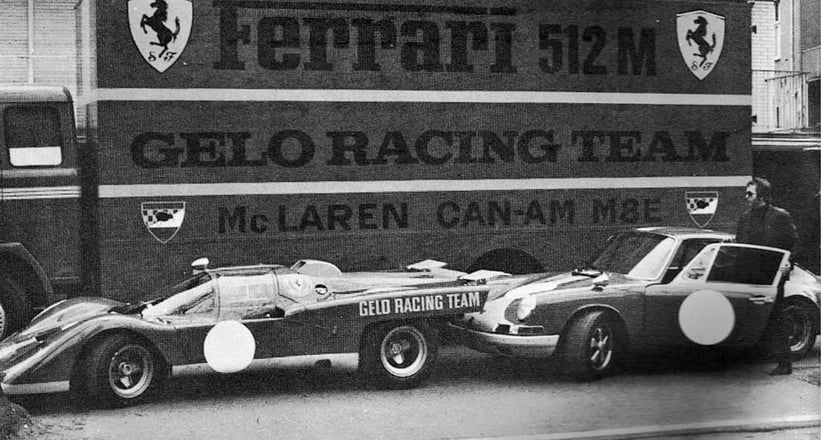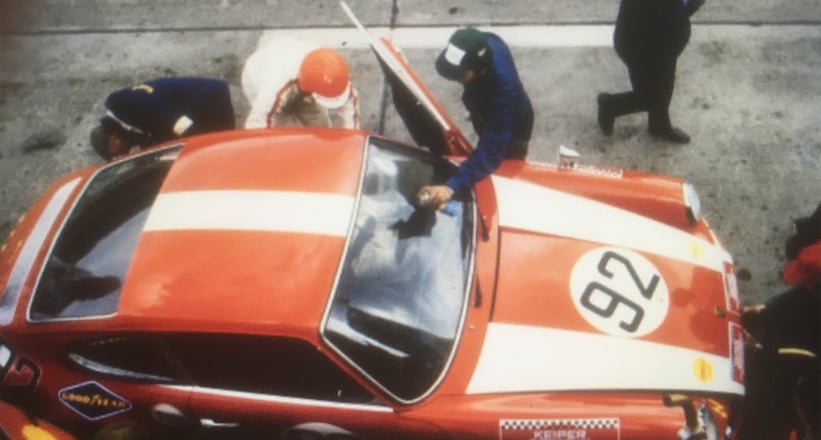
The data had been collected, the report was inbound, and Porsche technician Rolf Wütherich was anxiously waiting for the news. The year was 1966, and sports car racing was gaining immense popularity around Europe, meaning the pressure was truly on Rolf and his engineers to deliver a successor to the 356, which had spent the last 18 years enjoying glory in the endurance and circuit racing arena. While the anticipation was mounting, there was a subtle air of confidence among the team, as they knew the freshly-launched 911 was a wonderful road car, and its adaptation to become a race car with the 911 R had all of the right underpinnings to be a success. With an unladen weight of 800 kilograms and 210 horsepower sat comfortably on the rear axle, the car’s power-to-weight ratio was less than 4 kilograms per horsepower, making it a whole 1.5 kilograms or, in supermarket terms, a large watermelon lighter per horsepower than any of the competition at the time.
This project arose after Porsche caught wind of a run of privateer racers entering road-going 911s into race and rally events all over Europe, but during the development, Porsche realised the 911 R was set to cost double the amount of a standard 911. Thus the requirement to build 500 units in order to get homologation for the GT class became impossible to reach and only 19 cars were eventually built - 15 for privateers and four for works-entries, leaving many scratching their heads at how to enter a competitive 911. That's exactly where examples such as this evolved from, as for the majority of teams competing both in Europe and the US, the 911 S 2.0 was the appropriate choice, and this one certainly has some stories to tell from a lifetime of racing.


Starting life in July of 1967, this Porsche 911 2.0 was delivered to Karl von Wendt, with the plans of experiencing motorsport action ahead of the 1968 season. The car was promptly given an upgrade by Mitter Tuning, based in Böblingen, just a 30-minute drive from the factory the car rolled out of. This 911 was homologated for the 2.0-litre specification, according to Group 5 regulations, and was almost immediately a hit. Freiherr von Wendt would become European Touring Car Champion, with the 911 tackling the mighty Nürburgring and Spa-Francorchamps.



The 911 remained successful throughout the remainder of 1967 and 1968, being driven by Gerhard Mitter, Dieter Fröhlich, Dieter Glemser, and Helmut Kelleners, the latter becoming the runner-up in the same championship Wendt found victory in a year prior. By 1970, however, the car would take on an entirely new look and feel. It was sold to the legendary racer Georg Loos, who was one of the few at the time who had the technology to transform a ‘regular’ 911 into something akin to a 911R or 911 2.3 ST. The addition of two oil coolers in the fenders, as well as shorter swingarms in the rear, upgraded brakes and adjustable pedals all allowed this 911 to be driven harder, while remaining faithful to the somewhat loose regulations of Group 5 racing. Visually, this 911 looked racier thanks to widened rear side panels, applied to accommodate 8-inch steel wheels wrapped in fatter tyres. Under the bonnet, the powerplant essentially became that of a Carrera 6 engine, with sharp camshafts and 46 Weber carburettors which gave it a truly glorious soundtrack.

What followed was a multi-year jaunt across Europe for this plucky racer, attending just about every landmark circuit in Europe. From Hockenheim to The Green Hell, Estoril to Monza, and even an entry into the gruelling Targa Florio, this 911 took it all in its stride, showcasing the speed, agility and most importantly, durability of Porsche’s sportscar in its entirety. Racking up over 67 race entries from July 1967 to June 1973 in the 2-litre class, it’s likely this example is among the most-used privateer Porsche 911 2.0 litre racing cars from 1967. Now it has been treated to a full restoration, allowing its next owner to enjoy it to the fullest.



The car proudly presents in the livery worn during its entry into the 1970 1000 km of Nürburgring, with a starting number of 92, which would eventually lead to victory for Jürgen Neuhaus and Horst Klauke. With 2-litre Porsche racing arguably more popular than ever before among historical events, with jam-packed grids and high-profile driver rosters, this period-raced hero is now ready to hit the racetrack once more, and is no doubt eligible for multiple historic events all over Europe. As a deal sweetener, this car is accompanied by extensive documentation written by Mr. Ulrich Trispel, a well-known author of several Porsche books , who spent some time creating a book, “13448,” which consists of 270 incredible pages detailing the car's amazing history!
























